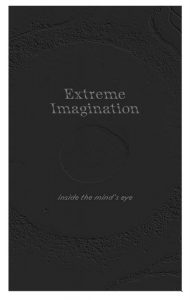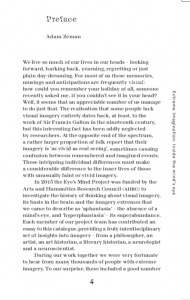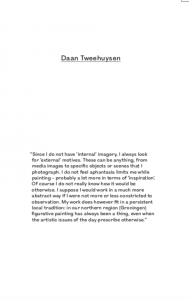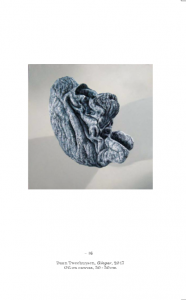
A small percentage of the population do not experience mental imagery; another minority experience particularly vivid mental imagery. Both groups include artists, writers, and designers. Extreme Imagination – inside the mind’s eye presents their work.
Hosted in 2019 by Tramway, Glasgow, and then Royal Albert Memorial Museum in Exeter, the exhibition challenges long-held beliefs about what it means to be creative.
The accompanying catalogue presents full-colour reproductions of the work alongside accounts of the artists’ working processes, plus essays by the Eye’s Mind research team on the art, science, and philosophy of imagining.
An innovative design by Valle Walkley means the book can be read in both directions – the texts running one way and images of the work running the other – reflecting the distinction between aphantasia and hyperphantasia.
Marrying form and content, the catalogue offers cutting edge insights into cognitive diversity and explores its implications for the history and practice of art.
Participants:
Sheri Bakes, Susan Baquie, Andrew Bracey, Stephanie Brown, Elina Cerla, Michael Chance, Trevor Keetley, Dominic Mason, Hillah Nevo, Isabel Nolan, Daan Tweehuysen, Claire Strickland, Kirsten Baron, Melissa English Campbell, Clare Dudeney, Geraldine van Heemstra, Megan Eckman, Elvenia Ruusu, Alejandro Murillo, Benjamin Hendy, Dustin Grinnell, Elisabeth Tova Bailey
Essays:
Adam Zeman – Phantasia: the (re)discovery and exploration of imagery extremes
John Onians – Extreme Imagination and the Emotions: Examples from the Middle East and the United States
Fiona Macpherson – What Is It Like to Have Visual Imagery?
Susan Aldworth – Harvesting the Imagination
Crawford Winlove – The Neuroimaging of Imagery
Matthew MacKisack – From Inner Design to Extended Mind: the Aphantasic Artist in History




